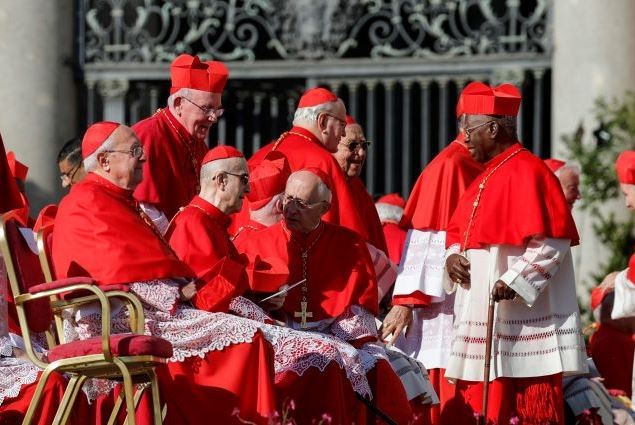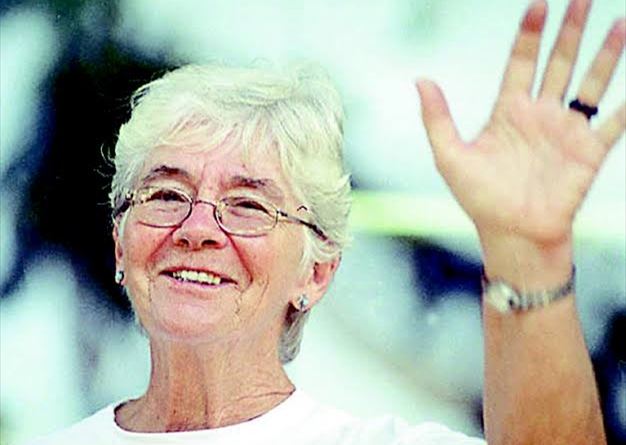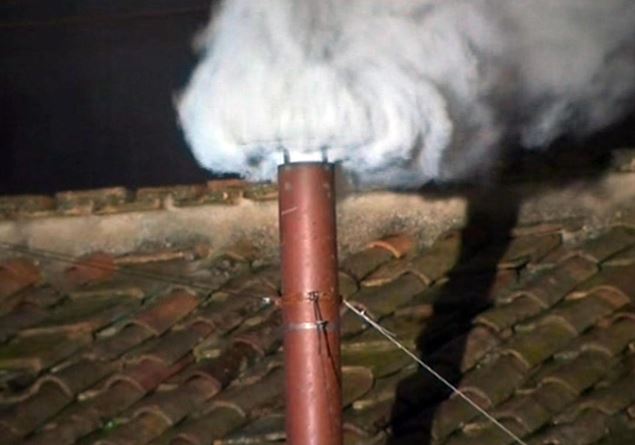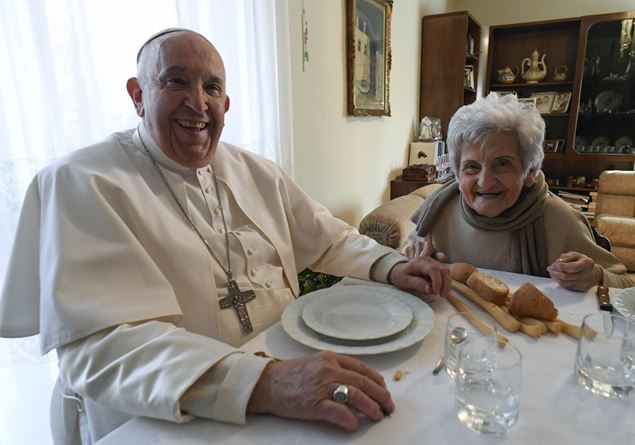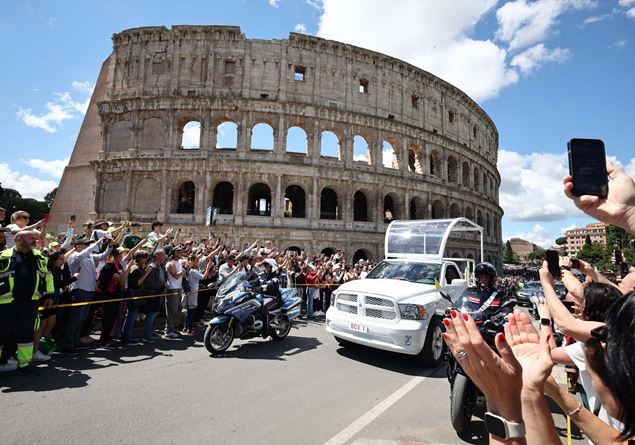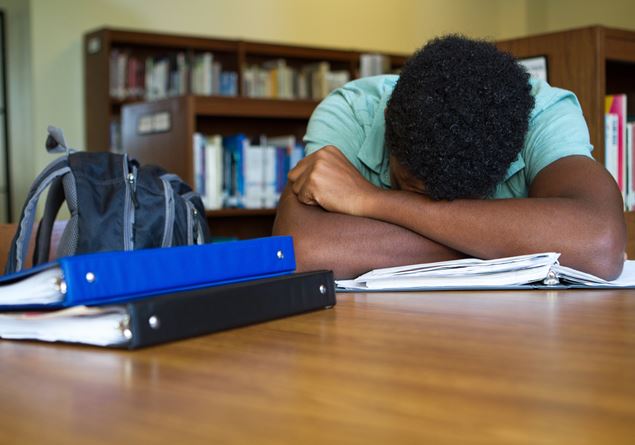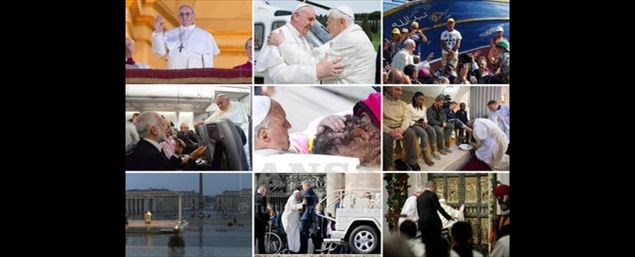Monsignor Erwin Kräutler, Emeritus Bishop of Xingu.
to darlei zanon
Twenty years ago, on February 12, 2005, in Anapu, Pará (Brazil), while he was going to find some indigenous families in the forest, sr. Dorothy was killed with six shots. He was 73 years old. There were numerous death threats, but his mission was always in first place. She responded to these threats saying that she would never escape, nor would she abandon the struggle of the poor and weak who live without protection in the middle of the Amazon forest.
Dorothy Stang was an American nun of the Congregation of the Sisters of Our Lady of Namur, who lived in Brazil for about 40 years, defending the indigenous populations, quilrolomola and coastal. He arrived in Brazil in 1966, starting his missionary activity in the state of the Maranhão, but soon he went to the Amazon, where he collided with powerful woods of the timber and landowners. At the time, the Amazon Region was experiencing a boom of migrations and explorations caused by the opening of roads during the Brazilian military dictatorship and the predatory development project (not sustainable) for the sowing and breeding of cattle, which exacerbated the conflicts in the region. In the forty years in which he developed his mission in Brazil, Sister Dorothy lived with the people, especially the most indigenous and the poorest, and discovered that the future of the Amazon and his peoples resided in a new journey: development sustainable and full ecology, which at the time did not receive these names, but now they are clear for us, after the publication of the Laudato yes and above all from the synod on the Amazon and its apostolic exhortation Querida Amazonia.
This was the greatest legacy of Sister Dorothy, as Felício Pontes Júnior, regional prosecutor of the Republic at the Federal Public Ministry of Pará and Doctor in State Theory and Constitutional Law at the Pontifical Catholic University of Rio de Janeiro – PUC recalls very well. -Rio, who spoke in exclusivity for Famiglia Cristiana: “I think the greatest inheritance is precisely the one that Sister Dorothy saw the possibility of preserving the Amazonian environment and at the same time developing the economy, two objectives that were not incompatible . Twenty years ago it seemed impossible to have a development that was not predatory, that did not break down the forests, and this was an obstacle that Dorothy had to overcome. He needed to demonstrate to everyone that it was possible to achieve this development without devastation, he managed to show us that it was possible and in a place where any development practice meant devastation “.
Despite all efforts and all studies, such as the synod for the Amazon, which demonstrate the economic feasibility of a sustainable development model, Felício Pontes recognizes that the Amazon continues to suffer: “The problem in the Amazon remains the same because the ‘Economic elite of the region does not want to listen, it does not want to face this truth so evident that it presents itself through the climatic crisis, and continues to insist on the model that I would define a predatory development model, contrary to what Dorothy preached. This predatory model today presents the same five main activities of the time, namely the demolition of trees, the breeding of cattle, mining, monoculture and energy. So there is always someone linked to one of these activities that will oppose the model proposed by Dorothy. “
It was precisely for his incessant fight against the predatory forestry model that the missionary was killed. Without ever forgetting the evangelical values and facing the powers of this world, those who promote the economy that kills and the culture of the waste of things and people, for which they could be considered martyr, Sister Dorothy dedicated themselves above all to the fight against deforestation And the exploitation, to the defense of the rights of the peoples of the Amazon and the education of poor women and children. The regularization of the lands for the families of rural workers and struggled against the violence of the invasions by lands’ pipelines, cutters and dedeshophudiaries defended. According to the witnesses of her murder, when the killers approached and asked her if she was armed, the nun took the Bible and said: “This is my weapon”, and started reading the beatitudes.
Archbishop Erwin Kräutler, Emeritus Bishop of Xingu and friend of the nun since 1982, remembering this act, says: “This last gesture of his is the last message Dorothy has left us. It is always the word of God that inspires us and guides us in our path. ” Msgr It is a martyr for the cause of the Gospel, a martyr for the cause that defended until the cruel death of which he was the victim. With his death he shook the world, revealing the bloody face of the Amazon, making the screams echo and revealing the pain that affects the people who live here. Sister Dorothy’s life can only be understood through the profound mysticism of a missionary devoted to Anawim of the Amazon, who accompanied her to her cruel death. “
Also Felício Pontes, known for his work in the defense of the peoples and communities of the Amazon, and for the complaints of the irregularities committed by the association between the Federal Government and large construction companies in the project of the Belo Monte’s hydroelectric power plant, also Consider Sister Dorothy a martyr: “Dorothy will always be remembered as a martyr of Amazon, a martyr of full ecology, the one who has managed, with his life, to show that there could be and that there had to be a new path, a journey which would have reconnected man to nature, which saw nature (or creation for theologians) not as an obstacle to overcome, but the human being as part of that nature and that the death of nature would be the death of being human itself. “
Sister Dorothy therefore anticipates the urgency of reconnecting man to nature and shows that this is possible. “This reconnection is the only way out we have in front of the climatic crisis and the climatic crisis shows us in reality that the path that Dorothy has indicated (the sustainable development project) is not a second course, an alternative path, But it is the only way to follow, “recalls Felício Pontes.
When asked what Sister Dorothy would say today to the Italians, the prosecutor of the Republic of Brazil said that she would say, with that soft, very sweet voice: “Do not fail to help our people, the people of the forest, our indigenous people, i Farmers, the quilombola, because alone they cannot fight against such a strong and overwhelming economic power as what we have in the Amazon today. Do not leave the Amazonian populations alone, because today fighting for these populations who live in the Amazon means fighting for the salvation of the planet “.
For Msgr. Erwin, “Sister Dorothy was a ‘voice shouting in the desert’ (Mk 1,3). The desert is not an immense expanse of sand that disappears on the horizon, but the deliberately attacked Amazonian forest. The largest misfortune of the Amazon is that men continue to cut and burn the forest. (…) Even in death, Sister Dorothy continues to insist on a greater sensitivity to the Amazon and to ask for more judgment and respect for the life of the people who live in this region and nature, the ‘common house’ that moans and implores Compassion because it is always attacked and violated again. And it is precisely in this sense that the people shout in the celebrations of the anniversary of the assassination of the religious: ‘Dorothy lives, lives, lives!’. “
Sister Dorothy has left a transformative pastoral action. Faced with all the climatic catastrophes that we have been experiencing in recent months, throughout the planet, his prophetic voice is of inspiration for all those who continue to fight in defense of the Amazon, our common home and of life.
Who was Sister Dorothy
Sister Dorothy usually wore a white shirt with the writing: “The death of the forest is the end of our life”. He also said: “We spend a few decades on earth. Use every day to bring joy, non -greed, to our tired land, so full of anguish. “
The Pastoral Commission of the Earth, connected to the conference of Bishops of Brazil (CNBB), has organized a pilgrimage in the forest every year, in honor of the missionary path, an opportunity in which threats and murders are publicly reported publicly of the peasant leaders of Anapu. The pilgrimage covers 55 kilometers between its tomb and the place where it was assassinated.
In 2008, the North American director Daniel Junge published a documentary entitled They killed Sister Dorothy. Narrated by Martin Sheen, the film won the public prize and the competition prize at the South by Southwest Festival 2008.
The plastic artist Cláudio Pastro included Sister Dorothy in the Azulejo panel The holy womeninside the basilica of Our Lady of Aparecida (Brazil).
The Synod on the Amazon (2019) recalled Sister Dorothy among the witnesses-martiri, people who gave life in defense of the forest and its people. In addition to his biography on the Synod website (see http://secretariat.synod.va/content/sinodoamazonico/it/testimoni.html), his image was present in one of the most touching moments of the synodal assembly, the Procession that led the participants from the Basilica of San Pietro to the synodal hall, accompanied by symbols and posters depicting the martyrs of the Amazon, including Alejandro Labaka and Inés Arango, Ezequiel Ramin, Chico Mendes, Josimo Tavares, Vicente Cañas, Cleusa Rody Coelho, Alcides Jiménez, Rodolfo Lunkenbein and Simon Bororo. Sister Dorothy and all these martyrs engaged in the beloved Amazon are true prophets, anticipators of the Synod and true precursors of the conversion to which the Synod has called us.
Mons. Erwin Kräutler Austrian religious, bishop of Xingu from 1981 to 2015, worked with Sister Dorothy Stang and continues in the same struggle for the rights of the peasant and indigenous communities and for the preservation of the environment in the Amazon region. So Msgr. Erwin testifies to his first meeting with Sister Dorothy: “What surprised me was your request to work ‘with the poorest of the poor’. For a moment I thought it was only one of those adventu lies that make incursions among the poor and then write a book on their experience. I told the nun that his desire, although very noble, was not so easy to achieve. I thought of the transamazônica-leste. There, in those days, poverty was the true ‘misery’. But she simply replied: ‘Please, let me try!’. And she tried this life among the poor until the fateful day of February 12, 2005, when at half past seven in the morning it was brutally murdered“.
The Vitalmiro Moura landfill, known as Bida, accused of ordering Sister Dorothy’s murder, was sentenced to 30 years of prison. In 2017, the registers Pereira Galvão was also tried and sentenced to 25 years in prison. Amair Feijoli from Cunha, who would be paid by Viltamiro to kill the missionary, was sentenced to 18 years in prison as an intermediary in crime. Rayfran Das Neles Sales, guilty confess, was sentenced to 27 years in prison for murder, but he left the closed regime to serve the rest of his sentence under house arrest in July 2013. Clodoaldo Carlos Batista, accused of being a complicit of Rayfran, He was sentenced to 17 years of prison, but left the Do Albergado house, located in Belém, in February 2011.


